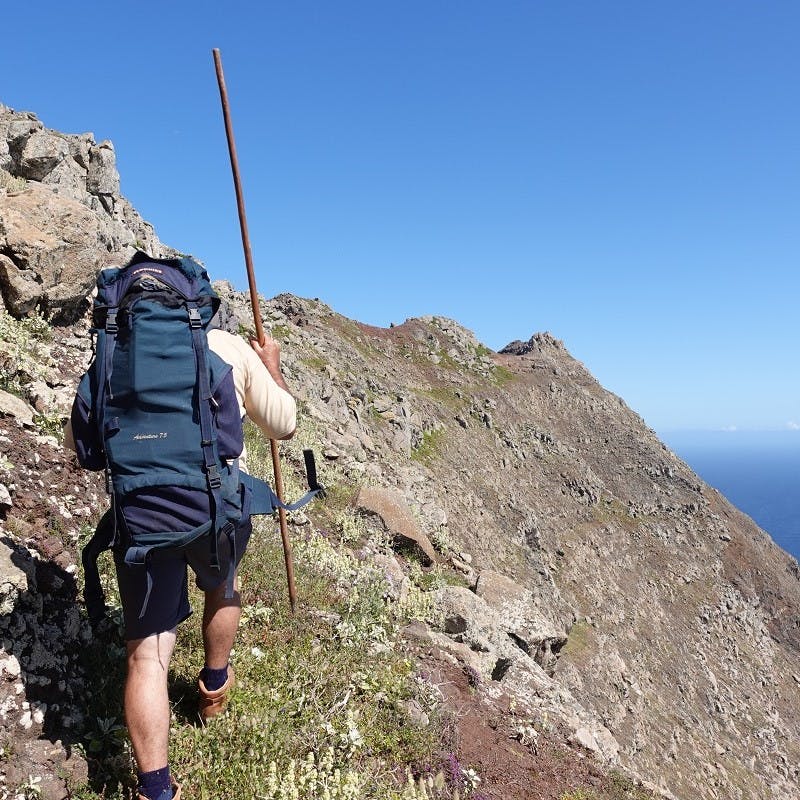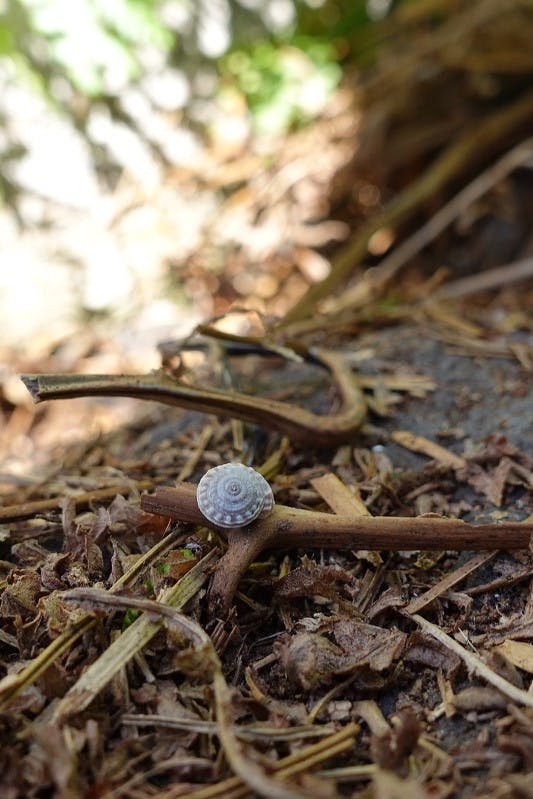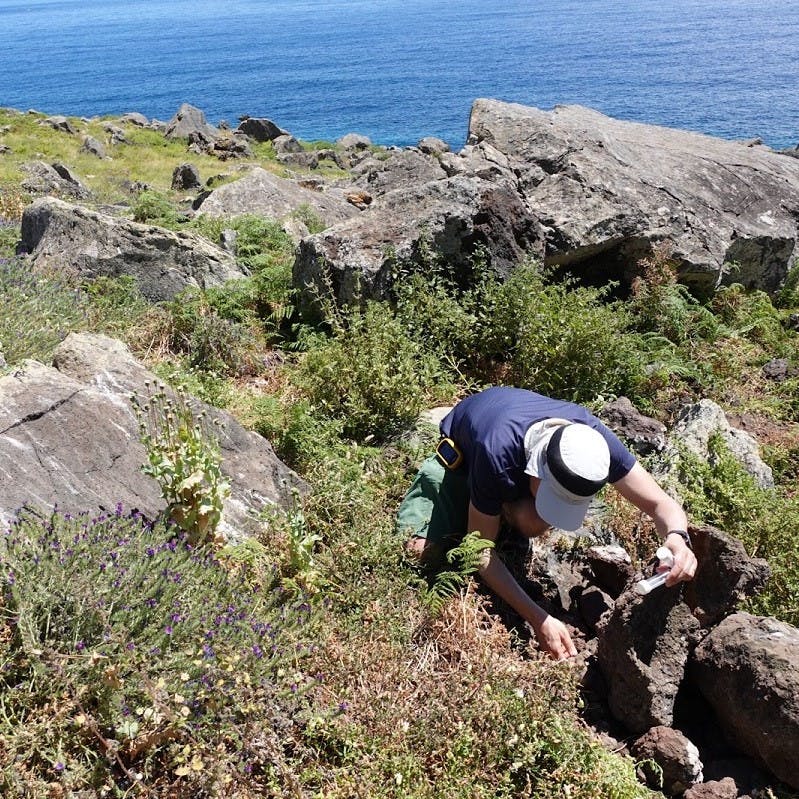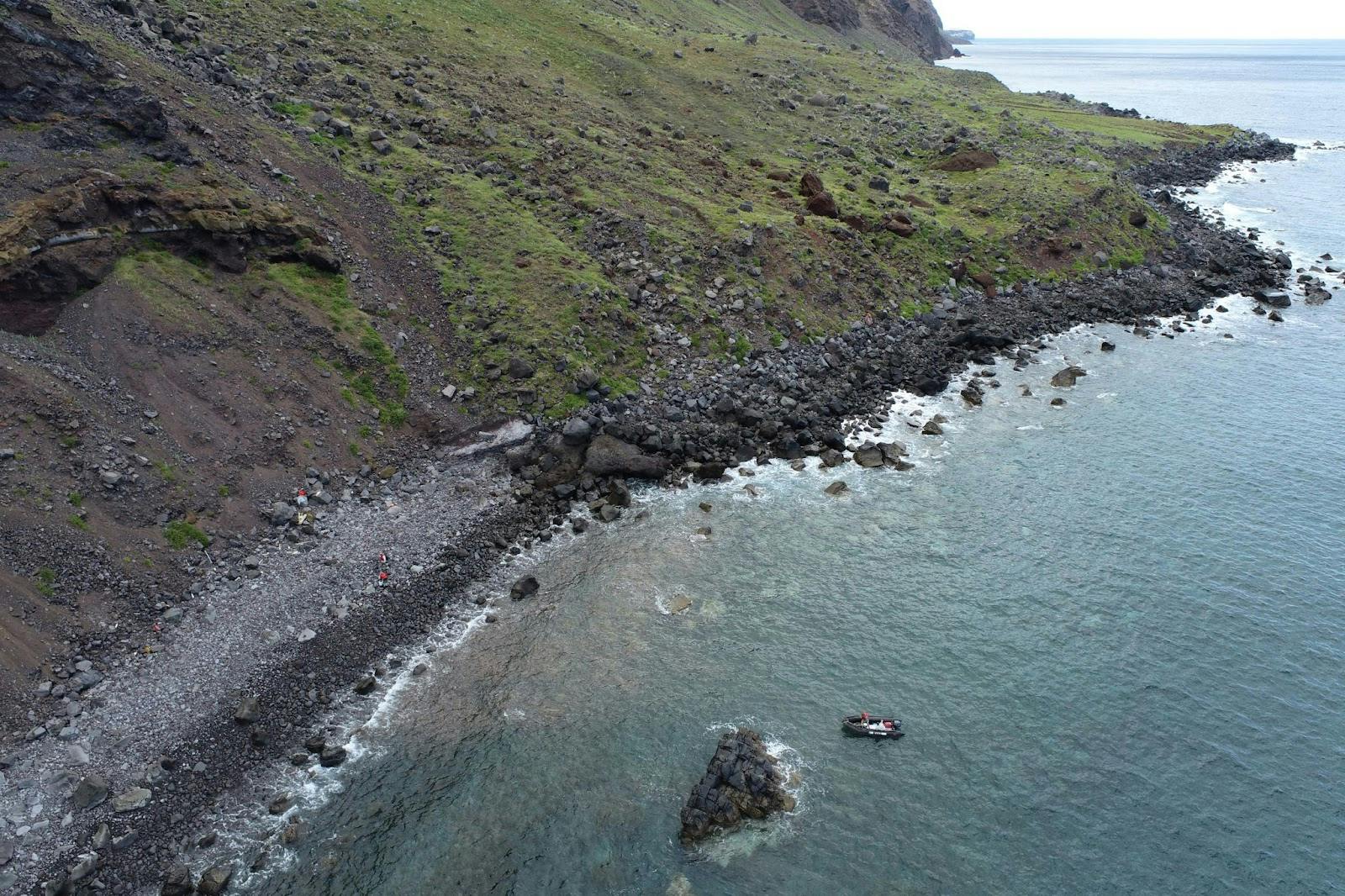- Budget spent: £8,423
- Status: In Progress
Four species of snail thought to be extinct have been found on a small Atlantic island. After more than 100 years without a confirmed observation, the species were rediscovered on Deserta Grande by the local conservationists at IFCN. Their only home and habitat had been devastated by invasive species so their reappearance comes as a very pleasant surprise. However, initial estimates of their numbers (less than 50) suggest they may be on the verge of extinction. In 2021, we joined a hopeful rescue operation led by the IFCN that aims to ensure the long term survival of these species. In November 2024, following a successful captive breeding program, we released 1,329 snails on Bugio Island. Watch this captivating conservation story unfold in the video below and read on for more context on the project.
The Plan
The objective of this project is to start a captive breeding programme in collaboration with Chester Zoo and Bristol Zoo to boost snail numbers. The first step of finding enough individuals of these endangered animals, perched on this rugged and remote island, was no easy feat. This is why, Tiago, one of our adventurous conservation biologists is helping with the expedition work.
Once enough snails are in captivity, the plan is to reintroduce them onto an adjacent island where the fossil record suggests the species used to be abundant and where the habitat is recovering following the eradication of invasive species.

The Species, Threats & Fieldwork
For this project, we are contributing to the fieldwork required to prevent the extinction of four species of snail that are endemic to Deserta grande, an island of the Madeira archipelago in the middle of the Atlantic ocean. All four species are deemed critically endangered according to IUCN criteria. The species in question are Discula lyelliana, Atlantica calathoides, Geomitra coronula and Geomitra grabhami.
The main threat for these snails have been the invasive species that have impacted the island’s fragile ecosystem after being introduced by humans settlers. Goats have proliferated and decimated the native vegetation and accelerated soil erosion. Direct threats have come from mice, who feed on the snails and the seeds of native plants.
This rescue operation involves multiple expeditions to:
- collect enough individuals from each species to start a captive breeding programme,
- monitor the remaining populations to obtain more accurate estimates of population size, population trends and threats,
- collect field environmental data to inform the conditions for captive breeding and the search for suitable reintroduction sites.
Each expedition entails some complicated boat disembarkation, strenuous hikes over steep terrain and long hours spent searching for snails under rocks and vegetation. We've joined these efforts to help with the surveys, to carry out the drone mapping and to document the expeditions. With the help of our members we have also been able to fund essential equipment to continue the fieldwork including items such as:
- data loggers and sensors to monitor environmental conditions at the sites of the last remaining populations,
- sieves for more effective sampling of soil and soil dwelling animals,
- tagging materials to be used for population monitoring.
The short-term goal of the rescue operation is to prevent the imminent extinction of these unique species. The long-term goal is to boost snail numbers and carry out reintroductions in suitable locations where the original threats have been dealt with and where the snails can thrive without further intervention. The project should also provide an example for future snail conservation work, which is much needed around the world right now.

The first releases
In November 2024, the first release of 1,329 snails took place on Bugio Island. These snails were bred at Chester Zoo in the UK, following breakthroughs in breeding techniques to save the species from extinction. Bugio Island was selected for the reintroduction due to the eradication of invasive species like goats and rats, and fossil evidence suggesting it was once their habitat. The snails, tagged with UV markers, were released under the cover of night to avoid disturbing the endangered Desertas petrels. This significant effort aims to establish a stable population and prevent their extinction.
Learn More About the Context Behind this Project
Why are these Species Important?
Although many people feel sad and worried about the news that we are at the start of a human induced mass extinction, few have a clear picture of what species we are actually losing. If you look at all the recorded animal extinctions since the year 1500 you will find that 40% of them are land or freshwater snail species and most have occurred on oceanic islands. We find this astonishing and alarming!
Two main factors are thought to explain this:
- Many oceanic snail species have very narrow ranges and even small amounts of habitat loss or degradation can tip them to extinction.
- Most of these species had evolved under low predation pressure so were susceptible to being wiped out by invasive species for which they had evolved no defence mechanisms.
Although snails may not receive the same attention as charismatic birds or mammals, they are unique and have their own evolutionary history and adaptations that are worth protecting.
Land snails are also valuable for a few other reasons. By feeding on dead vegetation they help with nutrient cycling and maintaining soil fertility and they also provide food for other small animals. Some species are fairly sensitive to habitat degradation so can be useful as bioindicator species serving as an early warning system for the ecosystem.
Finally, because of their limited dispersal ability and high species diversity they are a great study subject to understand:
- how evolution happens,
- how species emerge and,
- how they are lost to extinction.
Snails can also be identified from their shells after death and in the fossil record making them particularly suitable subjects for this interesting and consequential area of research.

More Reasons Why They Need Protecting
The Madeira archipelago is a hotspot for snail biodiversity
The situation in Madeira is fairly representative of the problems facing the land snails of oceanic islands worldwide. There are close to 320 known species of land snail in the archipelago of Madeira making it a snail biodiversity hotspot. Approximately 80% of these are endemic meaning they are found nowhere else in the world.
Lazarus taxa species rediscovered out of extinction
Lazarus taxa species are those that were rediscovered after they were thought to be extinct. For years, Isamberto Silva and Dinarte Teixeira from the IFCN had seen the fossils of these four species throughout the island. For them, finally seeing a live specimen after only finding their fossils was a thrilling moment having only imagined their colours, anatomy and behaviour. Initial population estimates suggested there may be less than 50 individuals left of each species so it became clear that a rescue operation was needed.
Once again we thank our members for supporting projects like this one. Every Mossy Earth member is helping to restore neglected species, such as these snails, whose current state is a 'shell' of their former self.

Our Partners
This snail species rescue operation is led by Dinarte Teixeira, the Malacologist at IFCN who sounded the alarm about these species. The captive breeding programme is led by Chester Zoo and Bristol Zoo Gardens. The project is also integrated into a broader conservation strategy of the IUCN’S Mid Atlantic Islands Species Specialist Group.
Pix4D, a drone mapping software company, has kindly offered to sponsor our use of their software for this and other Mossy Earth projects. This is part of their ambition of using their technology to support nature conservation and restoration projects.


A harsh but stunning landscape
A look at some of the dramatic landscapes the team crossed during this snail rescue operation.
YouTube Series
In this 6-part series, we take you alongside the team, every step of the way, on their quest to save these endangered snails.
Check out these vlogs for more footage of the first snail releases and an unexpected monk seal rescue on one of the islands.
Sources & further reading

- “Evolution and Extinction of Land Snails on Oceanic Islands” - Annual Review of Ecology, Evolution, and Systematics
- “Snails Are Going Extinct: Here's Why That Matters” - Scientific American







